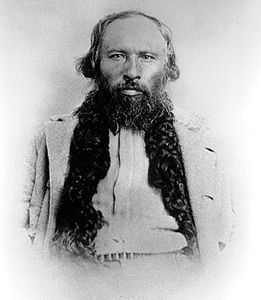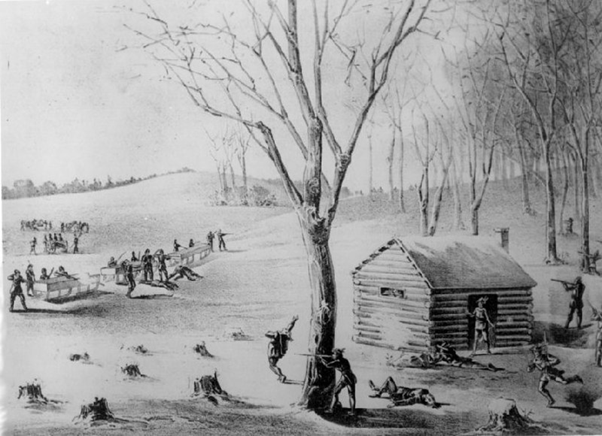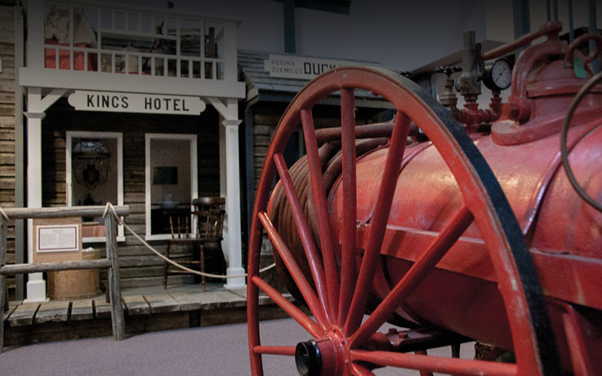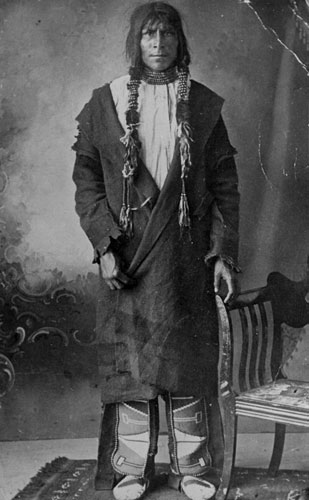Where Cultures Meet: Duck Lake Regional Interpretative Centre
In Duck Lake, Saskatchewan, Métis, Willow Cree First Nations, and pioneer cultures come together at the Duck Lake Interpretive Centre.
The region’s history is represented through artifacts, photographs and exhibits that detail life on Canada’s frontier, hardships faced by pioneers, and the political upheaval of the 1880s. Learn more about how these cultures meet throughout history and in the present at the Duck Lake Regional Interpretive Centre.
A Brief History Lesson
The story of Duck Lake goes back millennia, and the town is situated on the traditional territories of the Blackfoot, Plains Cree, Métis, Očhéti Šakówin and Cree people. First Nations people called the small body of water, now referred to as Duck Lake, “See Seep SaKayegan” and is believed to have gotten its name from the ducks that migrated to the area in the early spring and late fall. In the 1860s and 70s, Métis from Manitoba began to settle in Duck Lake, which was one of five Southbranch Settlements, which refers to a series of French-speaking Métis settlements in the Prairies. Many of the Métis in these settlements were fleeing from social and economic dislocation in Red River, Manitoba.
Duck Lake played a key role in the beginning of the North West Resistance in 1885, the seeds of which were planted as early as the 1870s with the lack of Métis representation in the government of the North-West Territories. Though today when we refer to the North West Territories we are normally referring to the territory in Canada’s north, between Nunavut and the Yukon, at the time the North-West Territories included Alberta and Saskatchewan. Representation for the Métis was granted in the 1880s, but frustration lingered as Métis petitions for formal title to their lands and their desire for proper representation went unaddressed. On March 18, 1885, the Batoche-area Métis established their own provisional government with Gabriel Dumont as the adjutant-general, Pierre Parenteau Sr. as chairman, and French-Canadian Philippe Garnot as secretary. Louis Riel also set up a people’s council consisting of 20 members.

Gabriel Dumont acted at the adjunct general in the Métis provisional government established in March 1885. He would become wounded in the Battle of Duck Lake just eight days after the establishment of the provisional government. Courtesy of Glenbow Archives, retrieved from The Canadian Encyclopedia.
Battle of Duck Lake and the Beginning of the North-West Resistance

Contemporary depiction of the Battle of Duck Lake, believed to be from The Canadian Pictorial and Illustrated War News published in July 1885. Photo: Library and Archives Canada – Canadian Illustrated News, 1885
On March 26, 1885, just eight days after the provisional government was established, the North-West Resistance began just west of Duck Lake on the Old Carlton Trail. Duck Lake’s location at the junction of the Carlton and Prince Albert Trails placed it in the middle of the Métis headquarters at Batoche and the North West Mounted Police (NWMP) at Carlton. When a Cree emissary and police interpreter scuffled in a parley, the Battle of Duck Lake broke out. Half an hour later, police and volunteers retreated. The Battle resulted in the deaths of twelve on the side of the NWMP and six on the side of the Métis resistors, as well as the wounding of Gabriel Dumont.
Widely considered to be the initial engagement of the North West Resistance, the Battle of Duck Lake was designated a national historic site in 1924.
Where Cultures Meet

Duck Lake Interpretive Centre
The Duck Lake Interpretive Centre is a locally owned non-profit dedicated to the preservation and conservation of cultures, stories, and artifacts belonging to the Willow Cree First Nation, Métis, and pioneers who called Duck Lake home. Moving through the circular gallery, visitors explore people, religion, education, economic life, and the 1885 political upheaval of the region through the perspectives of the Métis and First Nations, as well as the perspective of the settlers. A climb to the top of Duck Lake Regional Interpretation Centre’s tower, which completes the gallery, allows visitors to take in sweeping countryside views and to situate themselves within the region. From the top of the tower, visitors can see Batoche and Carleton, giving them a sense of where these important sites of historical events are in relation to one another.
Celine Perillat, Administrator at Duck Lake Interpretive Centre, shared that Duck Lake Interpretive Centre draws connections between the Indigenous, Métis, and settler stories. In the same way that families and cultures have connected in the area, they also connect through the Interpretive Centre.
Objects like Indigenous beadwork and Gabriel Dumont’s watch, which was loaned to the Interpretive Centre by the family, are on display alongside settler objects such as a horse’s hoof with a serial number – if you were a member of the North West Mounted Police you would be given a serial numbered horse, and if a tragedy befell the horse you’d have to cut off the hoof with the number to prove it was deceased. Perillat is not sure where exactly this hoof came from, it may have been from the Battle of Duck Lake or the Battle of Batoche, but it is part of the history of the events of 1885.
Perillat hopes that those who visit Duck Lake Interpretive Centre Walk away with a sense that what is represented in history books or what was taught to us as children may not have represented the full story, and that local voices and elders who have their own experiences and stories to share are not necessarily represented. She says she hopes visitors leave with “a bit of a better understanding and keeping an open mind that there are different sides to this story.”

Almighty Voice was arrested in 1895 for butchering a government steer and imprisoned at Duck Lake. He later escaped and was on the run for two years before being killed in a confrontation with NWMP in 1897. Courtesy of Glenbow Archives, NA-2301-01 retrieved from The Canadian Encyclopedia.
Highlights of the Interpretive Center include the jail where Almighty Voice was held, and escaped from after his arrest in 1895, Gabriel Dumont’s watch, and a boardwalk with early 1900s storefronts that transport you to the past.
The above historic site is part of the Trust’s Passport Places program, a National Trust membership benefit that provides free access to over 100 historic places in Canada, as well as 1000+ National Trust places abroad. Become a member today!
Sources:
Butts, Edward (2006). Almighty Voice. The Canadian Enyclopedia.
https://www.thecanadianencyclopedia.ca/en/article/almighty-voice
About. Duck Lake Regional Interpretive Centre.
https://www.ducklakemuseum.com/
Beal, Bob & McLeod, Rod. (2006). North-West Resistance. The Canadian Encyclpedia
https://www.thecanadianencyclopedia.ca/en/article/north-west-rebellion
1885 Northwest Resistance. Indigenous Peoples Atlas of Canada.
https://indigenouspeoplesatlasofcanada.ca/article/1885-northwest-resistance/

